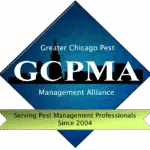PEST BIRD HEALTH RISKS
Pest birds can be very problematic to human health in a plethora of ways. Diseases can be passed to humans as a result of the bird itself, its fecal matter, its dander, and they can spread not only dangerous viruses and bacteria to humans but also transfer ectoparasites to humans or to human living areas. Ectoparasites like ticks, bed bugs, and bird mites can cause harm in a variety of ways to humans. For 
Pest bird control is vitally important especially in areas where humans reside such as condo and apartment complexes as well as single family homes. It's also important in places people work like government facilities and municipalities, commercial buildings and big box stores as well as industrial buildings. Fecal matter plays a large role in transferring diseases from infected birds to humans. Restaurants and food processing facilities are absolutely critical in having proper bird pest control in place because of the possible contamination of food. There are over 60 diseases that birds can carry and transmit to humans.
Below you will find just a portion of the 60 diseases that are carried by pest birds. There are many ways by which birds and the presence of birds can negatively affect human health. Most people do not realize the severity of pest bird diseases and the role they play in our society and the ramifications their presence can have on not just property and image but more importantly the health of human beings.
VIRUSES
Transmissions are primarily through mosquitoes, bird mites and ticks.
- St. Louis Encephalitis (Most Serious Risk)
- Western Equine Encephalitis
- Meningitis
- New Castle’s Disease
- H1N1 / Bird Flu
BACTERIA
There are more bacterial organisms associated with birds that affect human health than all other disease-causing organisms.
- Chlamydiosis
- Species most often affected are pigeons and gulls. Humans contract the disease by inhaling bacteria-laden dust.
- Salmonella
- Bacteria become airborne with feces dust in accumulated air intake vents, primarily at restaurants and food processing plants.
- Paratyphoid
- Vibriosis
- Listeriosis
- Pasteruellosis
- E. coli
FUNGI
Contact usually occurs through air handling systems, contaminated clothing, and spores becoming airborne. Species most associated are pigeons, blackbirds and starlings.
- Histoplasmosis
- Disseminated histoplasmosis is the result of the organism spreading throughout the body via the bloodstream. Over 30 million people a year are affected, with 10% exhibiting symptoms. The young, elderly, hospitalized or persons with immune system deficiencies are most affected.
- Crytococcis
- Like histoplasmosis, but ultimately results in meningitis. It is estimated that 50% of the pigeon population in the Western United States is infected.
- Candidasis
- Sarcosporidiosias
- Blastomycosis
ECTOPARASITES
Ectoparasites are found on the body or in nesting materials.
- Ticks
- A common ectoparasite found on birds that carry Lyme disease.
- Bird Mites
- Birds and bird nests carry bird mites which can infest buildings with available hosts.
- Bed Bugs
- Bed bugs often attach themselves to birds and are transferred to new areas by the birds.
PROTOZOAL
- Toxoplasmosis
- Trichomoniasis
- American Typansomiasis
Contact Us
PHONE
312-719-4909
OFFICE ONLY
630 WEST 16TH STREET
CHICAGO, ILLINOIS 60616
